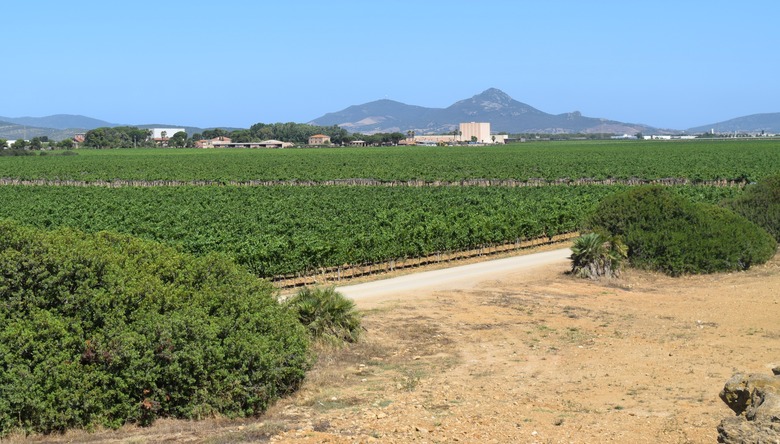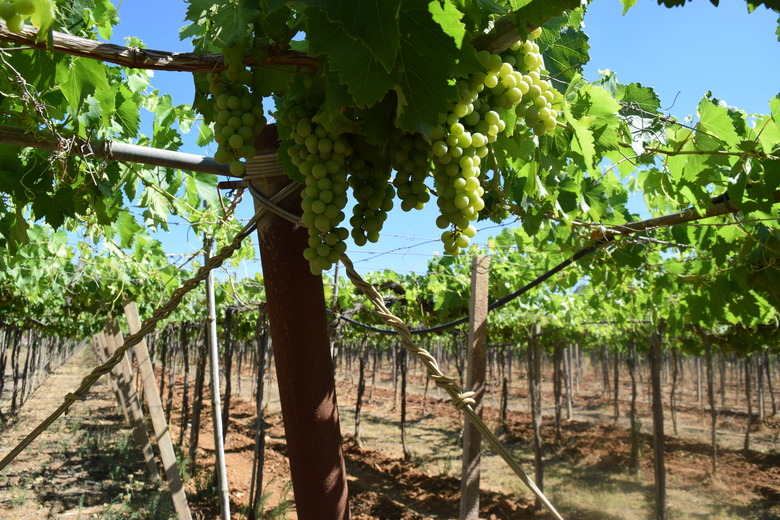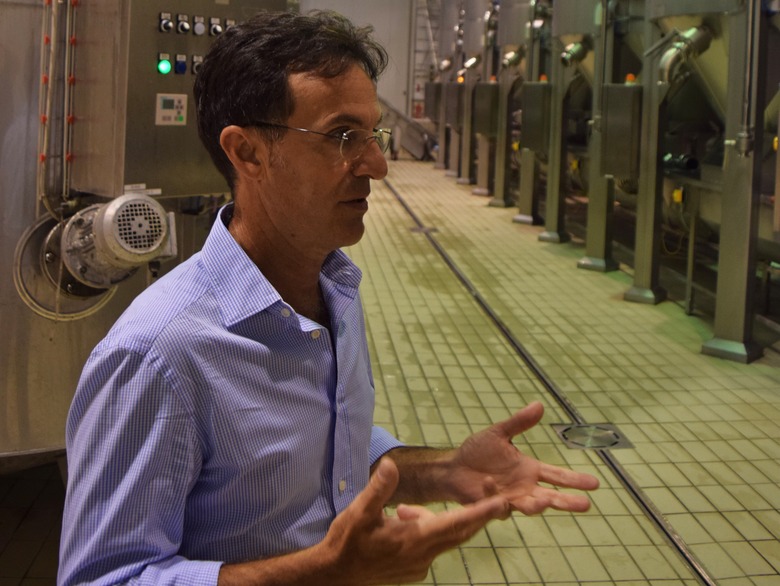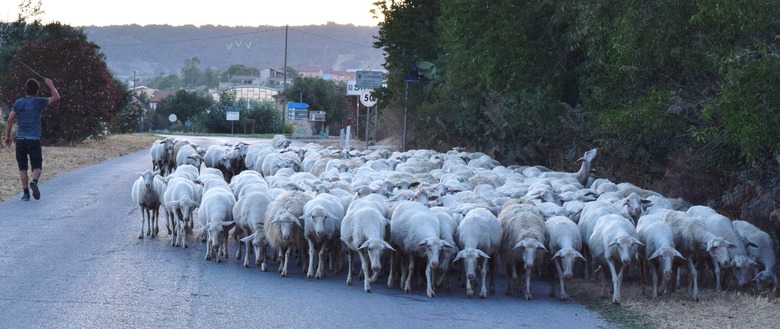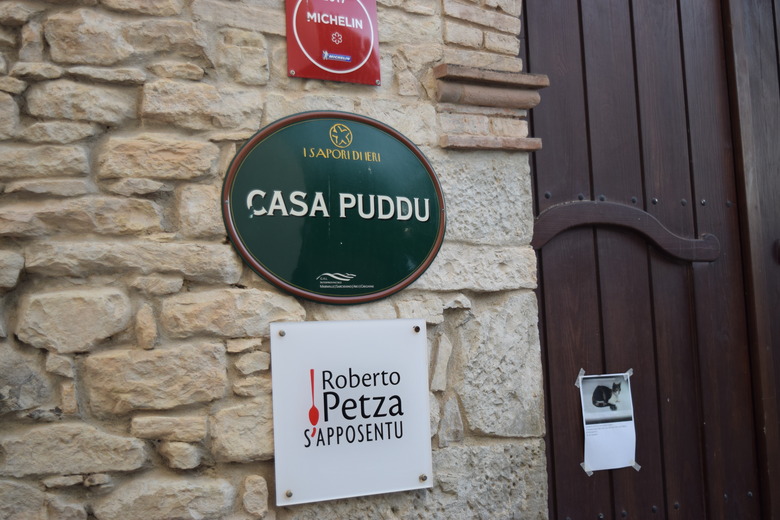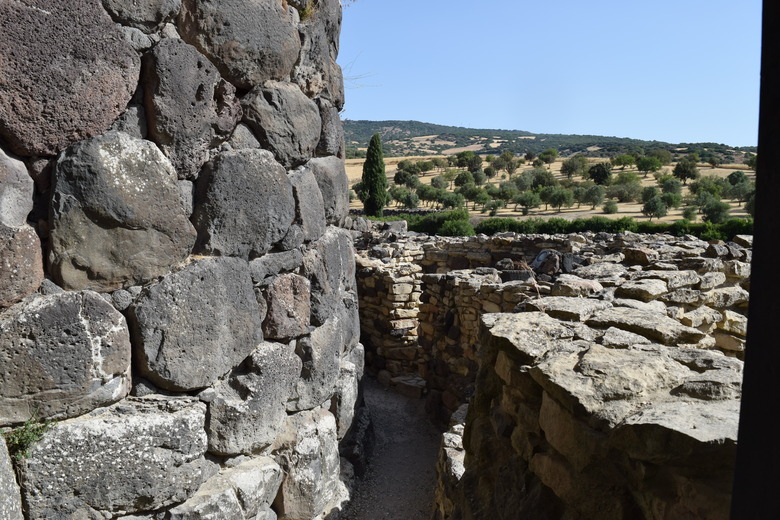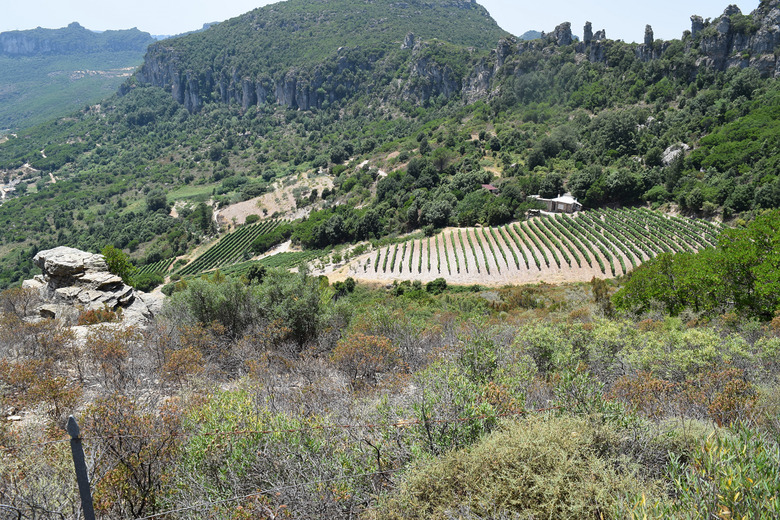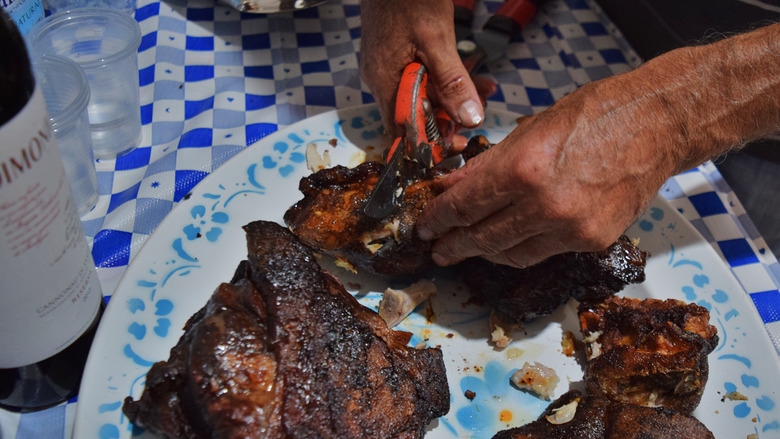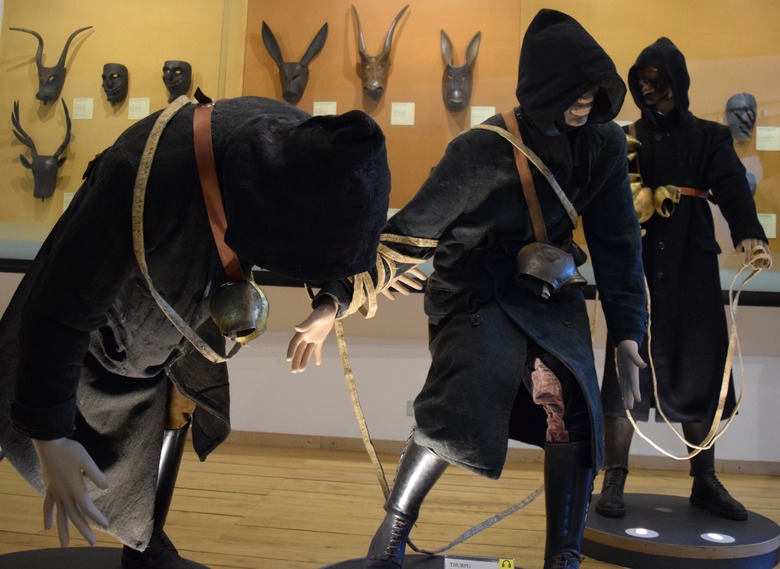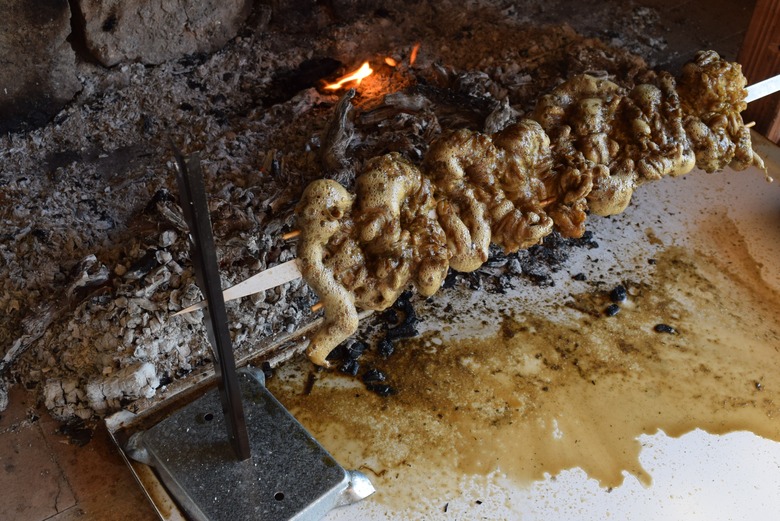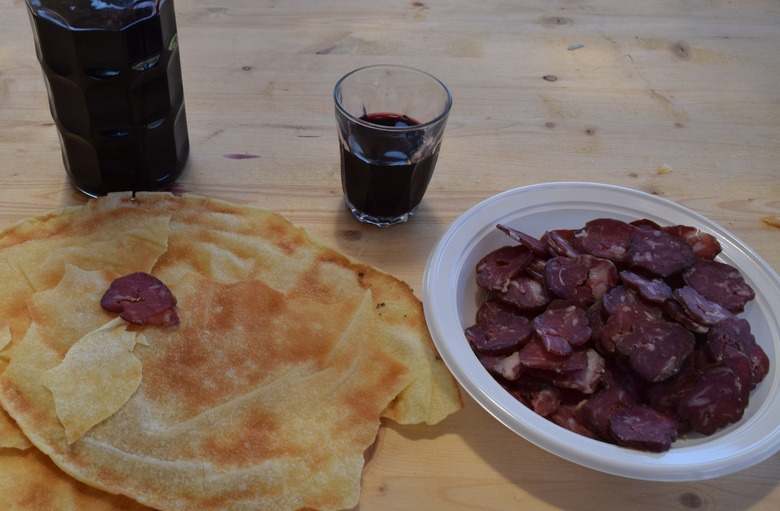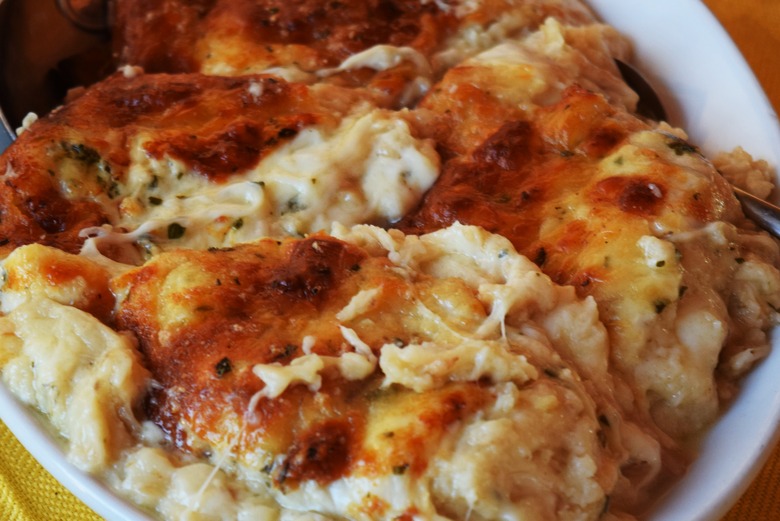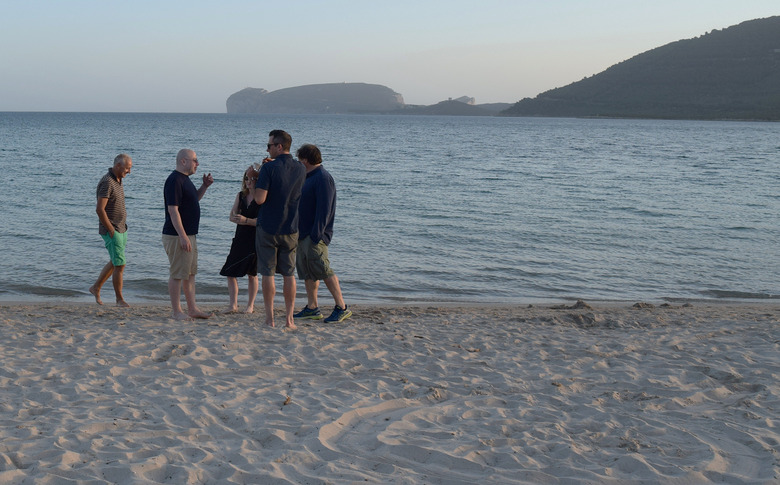Sardinia Is A Wine (And Food) Region Worth Discovering Slideshow
Wines from Sardinia — Italy's other major winemaking island in the Mediterranean, besides Sicily — have been increasingly appearing in retail wine shops and on the wine lists of major restaurants in the U.S. Although this island off of Italy's west coast, about an hour's flight from Rome, makes a great variety of wines from native grapes and non-native varieties that are seldom grown elsewhere, the introductory brigade has been composed largely of one white, vermentino, and two reds, cannonau (the local name for grenache) and carignano, or carignan.
Grapes have been grown in Sardinia since prehistoric days, and its broad plains and steep mountainsides are indeed ideal for vines. There is also a great cultural pride in winemaking here. Even those growers who sell their grapes to cooperatives or independent producers make their own wines — which can be delicious — for personal consumption.
There is a strong tie between specific grape varieties and the villages where they are traditionally grown. This has resulted in the proliferation of such obscure cultivars as monica, girò, nuragus, nasco and vernaccia. Altogether, there are 19 DOC (Denominazione di Origine Controllata) wines in Sardinia and one DOCG (Denominazione di Origine Controllata e Garantita, the highest Italian wine classification) — Vermentino de Gallura — along with 15 classified as IGT (Indicazione Geografica Tipica), granted to good wines that for whatever reason don't qualify for the higher categories. This all bodes well for those wishing to preserve the island's rich winegrowing heritage.
One of the oldest (since 1899) and largest producers is Sella & Mosca, outside Alghero on Sardinia's northwestern coast, and Gian Matteo Baldi, its general manager, is one of the biggest boosters of Sardinian culture and Sardinian winemaking. Recently, Baldi invited me and a few other American writers to tour this island winemaking kingdom.
Grapes Galore
In 1899, Erminio Sella and Edgardo Mosca drained swampland outside Alghero for a grapevine nursery and later added a winery. Today Sella & Mosca's home vineyard has grown to more than 1,200 acres, making it the second largest contiguous planting in Italy. This mega-vineyard grows many varieties of grapes, using several methods of planting and canopy management. Here, monica grapes hang from pergolas. Baldi says that two years ago he ordered the conversion of all the company's vineyards, here and elsewhere, to organic growing.
Wizard of the Cellar
Winemaker Giovanni Pinna presides over the winery's modern cellars, using similar vinification techniques for international and local varieties. Wines range from torbato — made from a variety that Sella & Mosca rescued from obscurity and that only they grow, turning it into two still wines, a sparkler, and a dessert wine — to a cannonau and cabernet blend called Tanca Farra'.
Flock in the Road
Our adventure into the countryside begins with a close encounter of the sheepish kind on our way to a Michelin-star dinner. Although Sardinia is surrounded by the sea, sheep remain the protein of choice, and sheepherding holds almost mystical cultural importance.
Country Fare
In the European tradition, some of the best restaurants are located in the countryside, including Roberto Petza's Michelin-starred S'Apposentu (the name is a Sardinian term meaning "the best room in the house"), located in the village of Siddi an hour north of Cagliari, where we are treated with a five-course meal with matching Sella & Mosca wines.
Prehistoric Fixer-Upper
The next day, it is culture time, as we prowl through the ruins of the nuraghe, or prehistoric structures, of Su Nuraxi di Barumini, a UNESCO World Heritage Site. Hundreds of these complexes are scattered across the island. Who built them? No written records of the Nuragic civilization, which lasted in Sardinia from the Bronze Age to the second century AD, have survived, and only artifacts and their distinctive architecture offer hints into their way of life.
Hanging Vineyards of Jerzu
Come the morning, we head into the steep mountains on the island's east side to visit the cannonau vineyards near the town of Jerzu. The mountainsides here are interlaced with fear-inspiring, single-lane dirt roads with a neatly tended vineyard around every corner.
Cut, Not Pulled, Pork
We stop for lunch at a vineyard hut — a small house where a vineyard owner can rest, sleep, cook, and even entertain without the long commute back to town. Here, the owner's husband multi-tasks his pruning shears to dissect grilled pork from a pig raised next to the vineyard.
The Masked Men
At the Museum of Mediterranean Masks in Mamoiada, the focus is on a regional ritual where men don wooden masks with animal and grotesque features along with costumes incorporating sheep fleece and cowbells and other objects that set up a din during their procession.
No Guts, No Glory
A featured treat when we visit winegrowers in Mamoiada is another lamb dish. While it's common to use lamb intestines as casings for sausages, this is the first time I've had them stuffed with more lamb intestines and grilled. Where is Anthony Bourdain when you need him?
Farmer’s Lunch
One constant at every farmhouse and restaurant table in Sardinia is pane carasau, a crisp, paper-thin, unleavened bread. Its origins date to the age when shepherds were away from home for months and would reconstitute the dried, long-lasting bread with water. In Mamoiada, it pairs well with cannonau and sausage.
More, Please
Our last day on the road takes us to Gallura, where vermentino is the queen wine. For lunch, I am served zuppa gallurese, not really a soup but instead a cheese-filled, savory bread pudding that puts mac and cheese to shame as a comfort food.
End of the Road
My last night in Sardinia takes us to a beach near Alghero and a café dinner looking over the bay. Everyone dips toes into the water, says goodbyes, and contemplates a long flight home the next morning.
If reading about Italian meals makes you hungry, check out our ranking of America's 50 Best Italian Restaurants.
